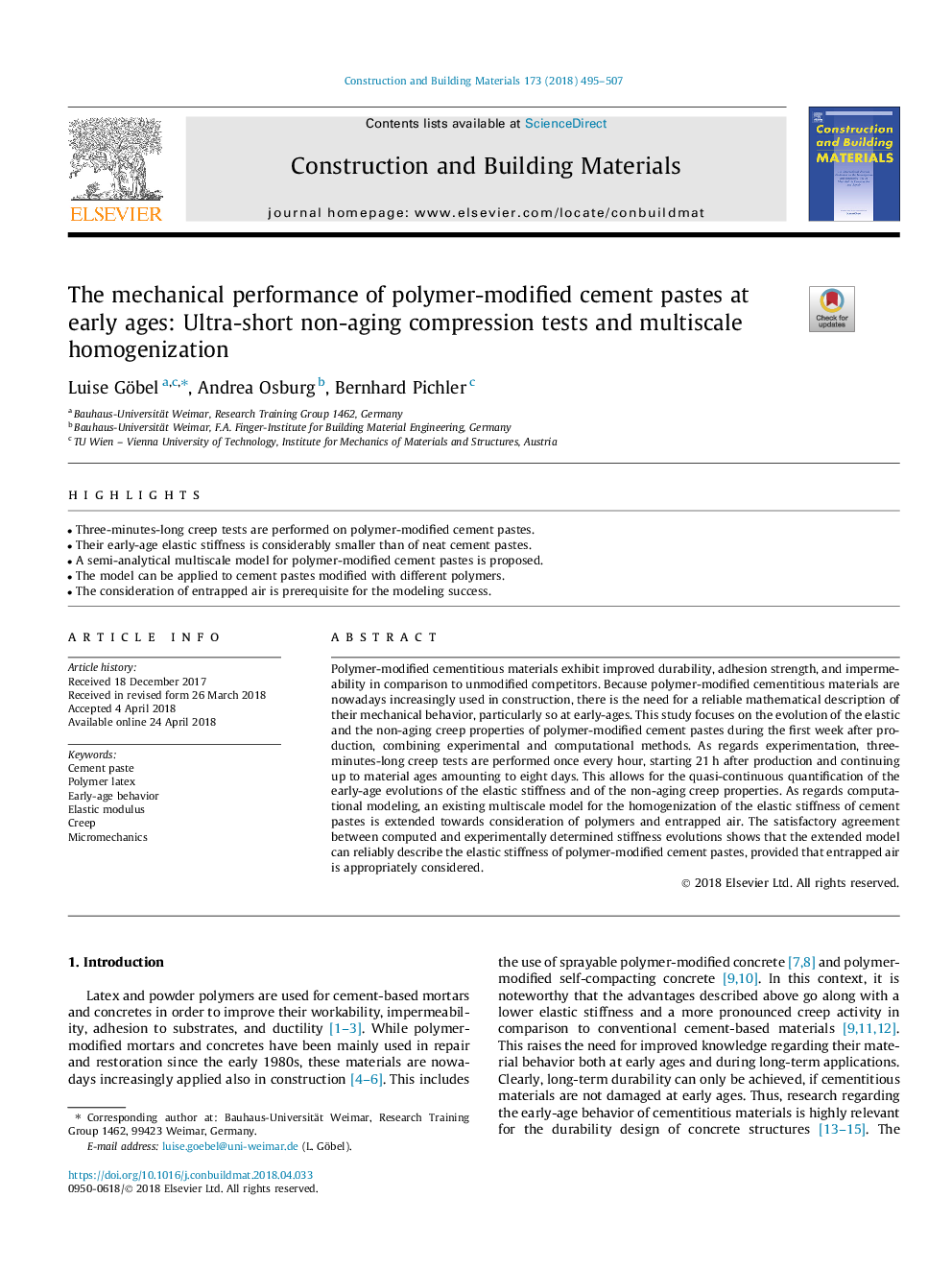| Article ID | Journal | Published Year | Pages | File Type |
|---|---|---|---|---|
| 6713749 | Construction and Building Materials | 2018 | 13 Pages |
Abstract
Polymer-modified cementitious materials exhibit improved durability, adhesion strength, and impermeability in comparison to unmodified competitors. Because polymer-modified cementitious materials are nowadays increasingly used in construction, there is the need for a reliable mathematical description of their mechanical behavior, particularly so at early-ages. This study focuses on the evolution of the elastic and the non-aging creep properties of polymer-modified cement pastes during the first week after production, combining experimental and computational methods. As regards experimentation, three-minutes-long creep tests are performed once every hour, starting 21â¯h after production and continuing up to material ages amounting to eight days. This allows for the quasi-continuous quantification of the early-age evolutions of the elastic stiffness and of the non-aging creep properties. As regards computational modeling, an existing multiscale model for the homogenization of the elastic stiffness of cement pastes is extended towards consideration of polymers and entrapped air. The satisfactory agreement between computed and experimentally determined stiffness evolutions shows that the extended model can reliably describe the elastic stiffness of polymer-modified cement pastes, provided that entrapped air is appropriately considered.
Related Topics
Physical Sciences and Engineering
Engineering
Civil and Structural Engineering
Authors
Luise Göbel, Andrea Osburg, Bernhard Pichler,
